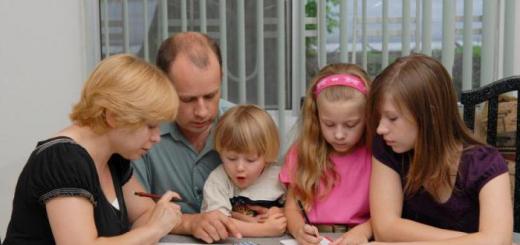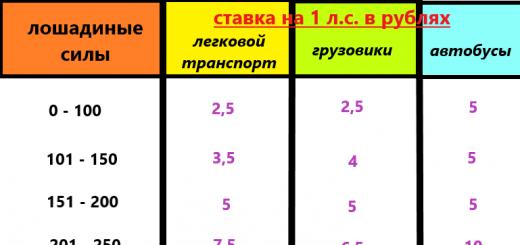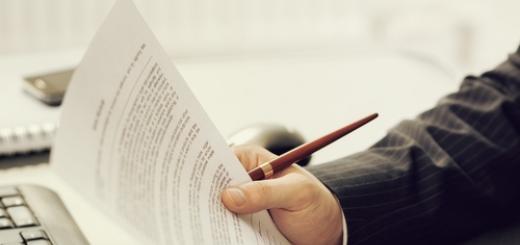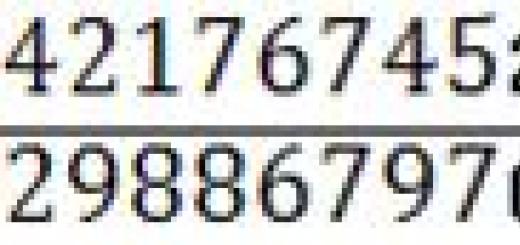Slide 1
"Population of Russia" Completed: 9th grade student of the secondary school №9 Art. Novosergievskaya Krylovsky district of Krasnodar Territory Ilyashenko SvetlanaSlide 2
 POPULATION The population of Russia is 145 million people. Russia has the seventh largest population in the world after: China, India, USA, Indonesia, Brazil and Pakistan.
POPULATION The population of Russia is 145 million people. Russia has the seventh largest population in the world after: China, India, USA, Indonesia, Brazil and Pakistan.
Slide 3
 Population and ethnic composition The most numerous peoples (more than 1 million people) peoples of Russia (according to the 2002 census), million people. Russia belongs to the multinational countries of the world, the population of which is distinguished by a complex and ethnically heterogeneous composition. V Russian Federation more than 160 peoples live
Population and ethnic composition The most numerous peoples (more than 1 million people) peoples of Russia (according to the 2002 census), million people. Russia belongs to the multinational countries of the world, the population of which is distinguished by a complex and ethnically heterogeneous composition. V Russian Federation more than 160 peoples live
Slide 4
 Population movement Changes in population size between censuses are determined using current records: natural movement - how many people were born and how many died; mechanical movement- how many arrived in Russia and how many left it.
Population movement Changes in population size between censuses are determined using current records: natural movement - how many people were born and how many died; mechanical movement- how many arrived in Russia and how many left it.
Slide 5
 Demographic crisis A sharp decrease in the population (as a result of the excess of deaths over births) is called a demographic crisis. Causes of the crisis: Wars Famine Epidemics Revolutions Repression Political and economic instability years Mln. people
Demographic crisis A sharp decrease in the population (as a result of the excess of deaths over births) is called a demographic crisis. Causes of the crisis: Wars Famine Epidemics Revolutions Repression Political and economic instability years Mln. people
Slide 6
 Reproduction of the population The nature of reproduction (renewal) of the population is determined by the ratio of the number of generation of children and generation of parents. The traditional type of reproduction - each subsequent generation is 1.5 times larger than the previous one. There was no family planning. + = Modern type of reproduction - Planning the number of children in the family. + = The family becomes small.
Reproduction of the population The nature of reproduction (renewal) of the population is determined by the ratio of the number of generation of children and generation of parents. The traditional type of reproduction - each subsequent generation is 1.5 times larger than the previous one. There was no family planning. + = Modern type of reproduction - Planning the number of children in the family. + = The family becomes small.
Slide 7
 Population reproduction The type of reproduction is characterized by the main demographic indicators: fertility, mortality, natural population growth.
Population reproduction The type of reproduction is characterized by the main demographic indicators: fertility, mortality, natural population growth.
Slide 8
 Fertility the number of births per year per 1000 inhabitants (in ‰) Factors affecting the fertility: wars; social conditions; health and medical care; level of education and culture; national and religious traditions; economic and political stability; economic activity of women.
Fertility the number of births per year per 1000 inhabitants (in ‰) Factors affecting the fertility: wars; social conditions; health and medical care; level of education and culture; national and religious traditions; economic and political stability; economic activity of women.
Slide 9
 Mortality the number of deaths per year per 1000 inhabitants (in ‰). Factors affecting mortality: wars; hunger; epidemics; bad habits; social upheaval; level of health care; economic and political instability.
Mortality the number of deaths per year per 1000 inhabitants (in ‰). Factors affecting mortality: wars; hunger; epidemics; bad habits; social upheaval; level of health care; economic and political instability.
Slide 10
 Natural increase is the excess of the birth rate over mortality (EP = P-S). Natural increase is positive when the birth rate exceeds the death rate (EP> 0). Natural increase is zero when the birth rate is equal to the death rate (EP = 0). Natural increase is negative when the birth rate is lower than the mortality rate (EP
Natural increase is the excess of the birth rate over mortality (EP = P-S). Natural increase is positive when the birth rate exceeds the death rate (EP> 0). Natural increase is zero when the birth rate is equal to the death rate (EP = 0). Natural increase is negative when the birth rate is lower than the mortality rate (EP
Slide 11

Slide 12
 Territorial differences in the level of population reproduction Regions of Russia with max and min natural increase at the end of the twentieth century (in ‰).
Territorial differences in the level of population reproduction Regions of Russia with max and min natural increase at the end of the twentieth century (in ‰).
Slide 13
 Age and sex structure A little more boys are born than girls (105-106 boys per 100 girls), so why by the age of 60 there are twice as many women as men (18 million and 9 million, respectively)? Reasons: Male professions are dangerous and harmful. Men die in wars and conflicts. Lifestyle and behavior of people. The female body is more stable and resilient.
Age and sex structure A little more boys are born than girls (105-106 boys per 100 girls), so why by the age of 60 there are twice as many women as men (18 million and 9 million, respectively)? Reasons: Male professions are dangerous and harmful. Men die in wars and conflicts. Lifestyle and behavior of people. The female body is more stable and resilient.
Slide 14
 The ratio of men and women of working age at the beginning of 2003,% Demographic characteristics of the population
The ratio of men and women of working age at the beginning of 2003,% Demographic characteristics of the population
Slide 15
 Age structure of the population In countries with a traditional type of reproduction, the share of children in the population is from 40 to 50%, while the number of elderly people is insignificant. In countries modern type reproduction, the share of children is less than 20%, and the elderly - 20% of the total population.
Age structure of the population In countries with a traditional type of reproduction, the share of children in the population is from 40 to 50%, while the number of elderly people is insignificant. In countries modern type reproduction, the share of children is less than 20%, and the elderly - 20% of the total population.
Slide 16

Slide 17
 Territorial differences in the age structure of the population Old-developed areas - Tula region, Moscow min - children, max - elderly. Weak industrial areas, national territories - Dagestan, Tyva max - children, min - elderly. Areas of the Far North, the population arrived to earn money - Magadan Region, Yamalo-Nenets Autonomous Okrug, max - able-bodied, min - elderly.
Territorial differences in the age structure of the population Old-developed areas - Tula region, Moscow min - children, max - elderly. Weak industrial areas, national territories - Dagestan, Tyva max - children, min - elderly. Areas of the Far North, the population arrived to earn money - Magadan Region, Yamalo-Nenets Autonomous Okrug, max - able-bodied, min - elderly.
Slide 18

Slide 19
 LABOR RESOURCES part of the population capable of working in the national economy. The basis of the labor force is made up of adults from 16 to 54-59 years old, i. E. able-bodied population... Working retirees are part of the workforce. The unemployed are a part of the labor force that wants to work, is looking for a job, but cannot find it.
LABOR RESOURCES part of the population capable of working in the national economy. The basis of the labor force is made up of adults from 16 to 54-59 years old, i. E. able-bodied population... Working retirees are part of the workforce. The unemployed are a part of the labor force that wants to work, is looking for a job, but cannot find it.
Slide 20
 Population employment structure Share in% Egypt Russia USA Industry and construction 20 37 24 Agriculture and forestry 44 15 3 Transport and communications 3 8 6 Trade 10 10 21 Management, science, culture, education, medicine 23 30 46
Population employment structure Share in% Egypt Russia USA Industry and construction 20 37 24 Agriculture and forestry 44 15 3 Transport and communications 3 8 6 Trade 10 10 21 Management, science, culture, education, medicine 23 30 46
Slide 21
 EMPLOYMENT IN THE ECONOMY Distribution of the number of employed in the economy by education level,%.
EMPLOYMENT IN THE ECONOMY Distribution of the number of employed in the economy by education level,%.
Slide 22
 Organized Unorganized Forced By organization Population migration By direction By duration Internal External Emigration Immigration Based on Daily "pendulum" Permanent Temporary Socio-economic Political Religious Family and household Ecological TYPES OF POPULATION MIGRATION
Organized Unorganized Forced By organization Population migration By direction By duration Internal External Emigration Immigration Based on Daily "pendulum" Permanent Temporary Socio-economic Political Religious Family and household Ecological TYPES OF POPULATION MIGRATION
Population of Russia At the end of 2002, the population of Russia was 145 million people. The exact information is provided by the population census, which is carried out once every 10 years. The first population census was carried out in 1897. The last population census was carried out in the fall of 2002.

Demographic crisis A sharp decrease in the population (as a result of the excess of deaths over births) is called a demographic crisis. Causes of the crisis: Wars Famine Epidemics Revolutions Repression Political and economic instability years Mln. people

Reproduction of the population The nature of reproduction (renewal) of the population is determined by the ratio of the number of generation of children and generation of parents. The traditional type of reproduction - each subsequent generation is 1.5 times larger than the previous one. There was no family planning. + = Modern type of reproduction - Planning the number of children in the family. + = The family becomes small.


Fertility the number of births per year per 1000 inhabitants (c) Factors affecting the fertility: wars; social conditions; health and medical care; level of education and culture; national and religious traditions; economic and political stability; economic activity of women.


0). Natural increase is zero when the birth rate is equal to the death rate (EP = 0). Natural growth "title =" (! LANG: Natural increase is the excess of fertility over mortality (EP = P-S) Natural increase is positive when the birth rate exceeds mortality (EP> 0). Natural increase is zero when the birth rate is equal to mortality (EP = 0). Natural" class="link_thumb"> 9 !} Natural increase is the excess of the birth rate over mortality (EP = P-S). Natural increase is positive when the birth rate exceeds the death rate (EP> 0). Natural increase is zero when the birth rate is equal to the death rate (EP = 0). Natural increase is negative when the birth rate is lower than the mortality rate (EP 0). Natural increase is zero when the birth rate is equal to the death rate (EP = 0). Natural growth rate is zero when the birth rate is equal to the death rate (EP = 0). Natural increase is negative when the birth rate is lower than the mortality rate (EP "> 0). Natural increase is zero when the birth rate is equal to the death rate (EP = 0). Natural growth "title =" (! LANG: Natural increase is the excess of fertility over mortality (EP = P-S) Natural increase is positive when the birth rate exceeds mortality (EP> 0). Natural increase is zero when the birth rate is equal to mortality (EP = 0). Natural"> title="Natural increase is the excess of the birth rate over mortality (EP = P-S). Natural increase is positive when the birth rate exceeds the death rate (EP> 0). Natural increase is zero when the birth rate is equal to the death rate (EP = 0). Naturals"> !}

Population reproduction Questions 1. What type of reproduction does our country belong to? 2. Name the region where the transition from the traditional to the modern type of reproduction began. 3. Where was the slowest transition to the modern type of reproduction? Task Find out the number of children of your ancestors up to 3-4 knees, where they lived and build a schedule.


Age and sex structure A little more boys are born than girls (per 100 girls - boys), so why by the age of 60 there are twice as many women as men (18 million and 9 million, respectively)? Reasons: Male professions are dangerous and harmful. Men die in wars and conflicts. Lifestyle and behavior of people. The female body is more stable and resilient.

Age structure of the population In countries with a traditional type of reproduction, the share of children in the population is from 40 to 50%, while the number of elderly people is insignificant. What countries of the world would you classify as this type? In countries of the modern type of reproduction, the share of children is less than 20%, and the elderly - 20% of the total population. Which countries belong to this type of reproduction?


Dynamics of the age structure of the population

Territorial differences in the age structure of the population Old-developed areas - Tula region, Moscow min - children, max - elderly. Weak industrial areas, national territories - Dagestan, Tyva max - children, min - elderly. Areas of the Far North, the population arrived to earn money - Magadan Region, Yamalo-Nenets Autonomous Okrug, max - able-bodied, min - elderly.


Age and sex pyramid of Russia Analyze the pyramids on page 249 Why are women predominant over men in older ages? Why is the population of Russia in 1997 generally older than in 1959? Why is the preponderance of women aged in 1959 much greater than in 1997? Why is there a "failure" at the age of years in 1959, and the opposite picture in 1997? Why is the configuration of the pyramid in 1997 for ages 30 to 40 and 2 to 10 very similar ("narrowing" of the base of the pyramid)?

Population employment structure Share in% Egypt Russia USA Industry and construction Agriculture and forestry Transport and communications 386 Trade Management, science, culture, education, medicine

LABOR RESOURCES part of the population capable of working in the national economy. The basis of the labor force is made up of adults from 16 to 54-59 years old, i. E. able-bodied population. Working retirees are part of the workforce. The unemployed are a part of the labor force that wants to work, is looking for a job, but cannot find it.






Slide 1
Slide 2
 Number Over the entire history of mankind, more than 100 billion people were born on Earth. Throughout history, population growth has been slow, acceleration has come only in the period of new and especially modern times. At the beginning of our era, 230 million people lived on Earth. The population reached 1 billion in 1820. In 1927 it became 2 billion, in 1960 - 3 billion, in 1974 - 4 billion, in 1987 - 5 billion, in 1999 - 6 billion. In 2006, the population of the Earth was 6.5 billion people. In 2011 - 7 billion people. The five largest countries in the world in terms of population are China, India, USA, Brazil, Indonesia. The forecast for the world's population in 2050 is 9.2 billion. Reproduction (natural movement) of the population - a set of processes of birth rate, mortality and natural growth, which ensure the continuous renewal and change of human generations.
Number Over the entire history of mankind, more than 100 billion people were born on Earth. Throughout history, population growth has been slow, acceleration has come only in the period of new and especially modern times. At the beginning of our era, 230 million people lived on Earth. The population reached 1 billion in 1820. In 1927 it became 2 billion, in 1960 - 3 billion, in 1974 - 4 billion, in 1987 - 5 billion, in 1999 - 6 billion. In 2006, the population of the Earth was 6.5 billion people. In 2011 - 7 billion people. The five largest countries in the world in terms of population are China, India, USA, Brazil, Indonesia. The forecast for the world's population in 2050 is 9.2 billion. Reproduction (natural movement) of the population - a set of processes of birth rate, mortality and natural growth, which ensure the continuous renewal and change of human generations.
Slide 3
 Reproduction of the population Reproduction (natural movement) of the population is a set of processes of fertility, mortality and natural growth, which ensure the continuous renewal and change of human generations. We can talk about two types of population reproduction.
Reproduction of the population Reproduction (natural movement) of the population is a set of processes of fertility, mortality and natural growth, which ensure the continuous renewal and change of human generations. We can talk about two types of population reproduction.
Slide 4
 First type The first type of population reproduction is a demographic crisis. Low birth rates, mortality rates and, accordingly, natural increase. The birth rate is 11, the death rate is 10 people per 1000 population. Natural growth in countries of this type is on average 1 person per 1000 population. There are countries with an average annual natural population growth of 5 people per 1000 inhabitants (USA, Canada, Australia), countries with zero or close natural growth (Belgium, Denmark, Portugal, Poland, Sweden) and countries with negative natural growth (Ukraine, Russia , Bulgaria, Latvia, Belarus, Hungary, Estonia, Lithuania, Germany, Austria, Romania, Slovenia, Czech Republic).
First type The first type of population reproduction is a demographic crisis. Low birth rates, mortality rates and, accordingly, natural increase. The birth rate is 11, the death rate is 10 people per 1000 population. Natural growth in countries of this type is on average 1 person per 1000 population. There are countries with an average annual natural population growth of 5 people per 1000 inhabitants (USA, Canada, Australia), countries with zero or close natural growth (Belgium, Denmark, Portugal, Poland, Sweden) and countries with negative natural growth (Ukraine, Russia , Bulgaria, Latvia, Belarus, Hungary, Estonia, Lithuania, Germany, Austria, Romania, Slovenia, Czech Republic).
Slide 5
 The second type The second type of population reproduction is the population explosion. High and very high fertility and natural increase rates and relatively low mortality rates. The birth rate is 24, the death rate is 8 people per 1000 inhabitants. Natural increase is 16 people per 1000 population. This type of reproduction is typical primarily for developing countries. The countries with the highest natural increase are Yemen, Uganda (35), Oman (33), Madagascar, DR Congo, Chad (30), Mauritania, Somalia, Guatemala (29).
The second type The second type of population reproduction is the population explosion. High and very high fertility and natural increase rates and relatively low mortality rates. The birth rate is 24, the death rate is 8 people per 1000 inhabitants. Natural increase is 16 people per 1000 population. This type of reproduction is typical primarily for developing countries. The countries with the highest natural increase are Yemen, Uganda (35), Oman (33), Madagascar, DR Congo, Chad (30), Mauritania, Somalia, Guatemala (29).
Slide 6
 Life expectancy Life expectancy is the expected life expectancy of the population, which is determined using calculations based on the theory of probability. Depends both on biological, hereditary characteristics, and on the conditions of nutrition, work, life. Measured by the number of years. At the beginning of the 21st century, this figure averages 66 years for the whole world (64 for men and 68 for women). The corresponding indicators for economically developed countries are 72 and 80, for developing countries - 62 and 66, including for the least developed countries - 51 and 53 years. The average life expectancy in Russia is 65.3 years (59 years for men and 27 years for women). There is no other country in the world with such a huge gap between the indicators of both sexes.
Life expectancy Life expectancy is the expected life expectancy of the population, which is determined using calculations based on the theory of probability. Depends both on biological, hereditary characteristics, and on the conditions of nutrition, work, life. Measured by the number of years. At the beginning of the 21st century, this figure averages 66 years for the whole world (64 for men and 68 for women). The corresponding indicators for economically developed countries are 72 and 80, for developing countries - 62 and 66, including for the least developed countries - 51 and 53 years. The average life expectancy in Russia is 65.3 years (59 years for men and 27 years for women). There is no other country in the world with such a huge gap between the indicators of both sexes.
Slide 7

Slide 8
 Sex composition On average, 104-107 boys are born for every 100 girls, by the age of 18-20 the ratio of both sexes is equalized. But in subsequent age groups, the formation of the sex composition of the population in different countries is not the same. In about 2/3 of the countries of the world, women are numerically predominant (CIS countries, Overseas Europe, North America). In Africa, Latin America, Australia and Oceania, the number of men and women is approximately the same. Overseas Asia is dominated by men (Sri Lanka, Pakistan, India, China).
Sex composition On average, 104-107 boys are born for every 100 girls, by the age of 18-20 the ratio of both sexes is equalized. But in subsequent age groups, the formation of the sex composition of the population in different countries is not the same. In about 2/3 of the countries of the world, women are numerically predominant (CIS countries, Overseas Europe, North America). In Africa, Latin America, Australia and Oceania, the number of men and women is approximately the same. Overseas Asia is dominated by men (Sri Lanka, Pakistan, India, China).
Slide 9
 Ethnic composition In total, there are 4-5 thousand peoples in the world, or ethnic groups, some of which have developed into a nation, while others are nationalities and tribes. The classification of peoples in terms of numbers testifies primarily to the exceptionally large differences between them. The bulk of the population is made up of large and especially the largest peoples, for example, the Chinese. Many hundreds of small peoples account for only a few percent of the world's population. For example, the number of the Botocuda tribe in Brazil is less than 1,000 people.
Ethnic composition In total, there are 4-5 thousand peoples in the world, or ethnic groups, some of which have developed into a nation, while others are nationalities and tribes. The classification of peoples in terms of numbers testifies primarily to the exceptionally large differences between them. The bulk of the population is made up of large and especially the largest peoples, for example, the Chinese. Many hundreds of small peoples account for only a few percent of the world's population. For example, the number of the Botocuda tribe in Brazil is less than 1,000 people.
Slide 10
 Linguistic composition The classification of peoples by language is based on the principle of their relationship. The most common language family is Indo-European. The languages of this family are spoken by 150 peoples with a total number of more than 2.7 billion people. About 1.4 billion people speak the languages of the Sino-Tibetan family, mainly Chinese, more than 370 million speak the languages of the Afrasian family, mainly Arabic. The majority of other families are much smaller.
Linguistic composition The classification of peoples by language is based on the principle of their relationship. The most common language family is Indo-European. The languages of this family are spoken by 150 peoples with a total number of more than 2.7 billion people. About 1.4 billion people speak the languages of the Sino-Tibetan family, mainly Chinese, more than 370 million speak the languages of the Afrasian family, mainly Arabic. The majority of other families are much smaller.
Slide 11
 Religious composition The most widespread of the world's religions is Christianity, which is professed by about 2.4 billion people, mainly in Europe, America and Australia. The second place in the number of believers is occupied by Islam - more than 1.5 billion people. Islam is declared the state religion in many countries, located mainly in Asia and Africa. The third place among world religions in terms of the number of adherents belongs to Buddhism - 370 million people. Buddhism is widespread in Central, Southeast and East Asia. National religions include Hinduism in India, Confucianism in China, Shintoism in Japan. Judaism is also widespread.
Religious composition The most widespread of the world's religions is Christianity, which is professed by about 2.4 billion people, mainly in Europe, America and Australia. The second place in the number of believers is occupied by Islam - more than 1.5 billion people. Islam is declared the state religion in many countries, located mainly in Asia and Africa. The third place among world religions in terms of the number of adherents belongs to Buddhism - 370 million people. Buddhism is widespread in Central, Southeast and East Asia. National religions include Hinduism in India, Confucianism in China, Shintoism in Japan. Judaism is also widespread.
Slide 12
 Population distribution The world's population is distributed extremely unevenly: about 2/3 of all people live on 8% of the earth's land area. Out of every 100 inhabitants of the Earth, 80 live on lowlands and plains located at an altitude of 500 m above sea level, which occupy only 28% of the earth's land. Mountainous areas are less populated, although there are exceptions to this rule: in Bolivia, Peru and China (Tibet), the border of human habitation exceeds 5000 m above sea level. More than half of humanity is concentrated in the 200-kilometer strip along the coasts of the seas and oceans, and almost 30% in the 50-kilometer strip, which occupies only 12% of the land. In individual, mainly island and peninsular states, this figure is even higher. In Japan, 9/10 of the population lives no further than 50 km from the sea, in the UK - 3/4. In Norway, Denmark, Ireland, Portugal, Chile, New Zealand, Cuba and the Philippines, the entire population lives no further than 200 km from the sea.
Population distribution The world's population is distributed extremely unevenly: about 2/3 of all people live on 8% of the earth's land area. Out of every 100 inhabitants of the Earth, 80 live on lowlands and plains located at an altitude of 500 m above sea level, which occupy only 28% of the earth's land. Mountainous areas are less populated, although there are exceptions to this rule: in Bolivia, Peru and China (Tibet), the border of human habitation exceeds 5000 m above sea level. More than half of humanity is concentrated in the 200-kilometer strip along the coasts of the seas and oceans, and almost 30% in the 50-kilometer strip, which occupies only 12% of the land. In individual, mainly island and peninsular states, this figure is even higher. In Japan, 9/10 of the population lives no further than 50 km from the sea, in the UK - 3/4. In Norway, Denmark, Ireland, Portugal, Chile, New Zealand, Cuba and the Philippines, the entire population lives no further than 200 km from the sea.
Slide 13
 Population density Average population density of the Earth - 48 people per 1 sq. km. But the differences between countries are very large. Most often, Bangladesh is called as the most densely populated country in the world, where the population density indicator has already exceeded 1000 people per 1 sq. km. But in small, predominantly island states, it is even higher: in Singapore - more than 6500, in the Maldives - 1100, in Malta 1200 people per 1 sq. km. In Monaco - 16400 people per 1 sq. km. Along with this, about half of the inhabited land area has an average population density of less than 5 people per 1 sq. km. The areas completely unexploited by people occupy 15% of the land area.
Population density Average population density of the Earth - 48 people per 1 sq. km. But the differences between countries are very large. Most often, Bangladesh is called as the most densely populated country in the world, where the population density indicator has already exceeded 1000 people per 1 sq. km. But in small, predominantly island states, it is even higher: in Singapore - more than 6500, in the Maldives - 1100, in Malta 1200 people per 1 sq. km. In Monaco - 16400 people per 1 sq. km. Along with this, about half of the inhabited land area has an average population density of less than 5 people per 1 sq. km. The areas completely unexploited by people occupy 15% of the land area.
Slide 14
 Types of international migration Permanent (permanent) Temporarily permanent Seasonal Pendulum (border) Illegal (underground) Forced Episodic
Types of international migration Permanent (permanent) Temporarily permanent Seasonal Pendulum (border) Illegal (underground) Forced Episodic
Slide 15
 Patterns of migration All countries are involved in the migration process Feminization of migration flows Qualitative changes (“brain drain”) Changing directions of migration flows Formation of migration networks Discussion of migration problems in the context of human rights
Patterns of migration All countries are involved in the migration process Feminization of migration flows Qualitative changes (“brain drain”) Changing directions of migration flows Formation of migration networks Discussion of migration problems in the context of human rights
Slide 1
Population of Russia
Slide 2

Population
The population is the object of the study of socio-economic geography, which establishes the general laws of its development, considering its vital activity in all aspects: historical, political, economic, social, medical and statistical.
Slide 3

In Russia, the demographic dynamics of the population is recorded: Censuses (the last census was carried out in 2010) Current population records (necessary between censuses, allows you to assess the demographic situation at any time) Current registration of natural movement (Federal State Statistics Service (Rosstat) and its territorial bodies , as well as registry offices) Current registration of migration movement (carried out by passport offices upon arrival)
Slide 4

According to the latest census data, 141.9 million people live in Russia. (2010 data)
Slide 5

Reproduction of the population
Reproduction (natural movement) of the population is understood as the totality of the processes of fertility, mortality and natural growth, which ensure the continuous renewal and change of human generations.
Slide 6

The formula of natural increase EP = P - C, where P is the birth rate (the number of births per year per 1000 inhabitants) C is the mortality (the number of deaths per year per 1000 inhabitants) EP is the natural increase (decrease)
Slide 7

Demographic crises
DEMOGRAPHIC CRISIS - a period of a sharp decline in the country's population due to wars, revolutions, epidemics, and other social upheavals. XX century: 1 demographic crisis: 1914-1922 (1 world war, revolution of 1917, civil war, emigration) 2 demographic crisis: 1932-1937 (collectivization of agriculture, famine of 1933-34, repression) 3 demographic crisis : 1941-1945 (Great Patriotic War) 4 demographic crisis: 1990 - present (economic crisis, instability, unfavorable environmental situation)
Slide 8

Mortality is a statistic that measures the number of deaths. In demography, the ratio of the number of deaths to the total population.
Slide 9

Depopulation is a systematic decrease in the absolute population of a country or territory as a result of narrowed reproduction of the population, when subsequent generations are numerically smaller than the previous ones (mortality exceeds the birth rate, high emigration, there are circumstances that cause large losses of people - for example, war), that is, during depopulation, population decline is observed.
Slide 10

Age structure of the population of Russia
Indicators 1897 1939 1959 1979 2000
Population, million people including persons (%) 68.0 108.4 117.8 137.4 145.0
up to 15 years 40 38.8 30.0 23.3 20.0
16-59 years 51.3 52.6 58.3 60.4 59.3
over 60 8.7 8.7 11.7 16.3 20.7
Slide 11

Slide 12

Slide 13

Fertility is a demographic term, defined as the ratio of the number of births over a certain period per 1000 inhabitants.
Slide 14

Slide 15

Slide 16

Slide 17

At the moment, 141.8 million people live in Russia. The mortality rate exceeds the birth rate According to statistics, there are 8.5 men per 10 women Now the average life expectancy of a Russian is 67 years
Results of the subsection of the presentation "Population of Russia":
Slide 18

National composition
Slide 19

Slide 20

Ethnographic position of Russia:
1. The junction of Europe and Asia 2. Western part - European influence. 3. The Caucasus is an independent integrity, but is very closely connected with the Near and Middle East. The junction of the Christian and Muslim world. 4. Central Asia is a meeting place for different cultures. 5. The Far North - "the fourth world", the land of peoples (26 - 180 thousand). The area is unfavorable for living.
Slide 21

On the 1st place in terms of number - the Indo-European language family. Russians, Ukrainians, Belarusians, Germans, Ossetians. The second place is occupied by the Altai language family. 12 million people. Tatars, Bashkirs, Chuvash, Altai, Khakass, Tuvinians, Yakuts, Balkars, Kumyks, Karachais, Kazakhs. Ural-Yukaghir family - Mordovians, Udmurts, Mari. The North Caucasian family is the most compact area.
Slide 22

A significant part of the peoples of Russia are settled outside their republics. The scattered distribution of many peoples, their intense contacts with each other, and especially with the Russians, contributed to the process of assimilation (the "dissolution" of some peoples among others).
summaries of presentations
Population of Russia
Slides: 16 Words: 834 Sounds: 0 Effects: 0Social studies lesson on the topic: "Demography of modern Russia." Content: Project objectives: Lev Nikolaevich Tolstoy. What is demography. Criteria for assessing the demographic situation. Fertility as an assessment criterion. A system of indicators is used to measure the birth rate in demography. The dynamics of the birth rate of the population of Russia. Mortality and life expectancy as an assessment criterion. The rate of natural growth as a criterion for assessment. Age and sex structure of the population as an assessment criterion. In the twentieth century, the sex ratio in our country was greatly deformed. During the intercensal period, the age structure of the population of Russia also changed. - Population of Russia.ppt
Population in Russia
Slides: 27 Words: 726 Sounds: 0 Effects: 221Population of Russia. Geography. At the end of 2002, the population of Russia was 145 million. The first population census was carried out in 1897. The last population census was carried out in the fall of 2002. Population movement. Demographic crisis. Years. Mln. people Reproduction of the population. Fertility. Mortality. the number of deaths per year per 1000 inhabitants (in ‰). Natural growth. Natural increase is zero when the birth rate is equal to the death rate (EP = 0). Natural increase is negative when the birth rate is lower than the mortality rate (EP<0). Динамика рождаемости и смертности в России (в ‰). - Население в России.ppt
Russian population
Slides: 26 Words: 1196 Sounds: 0 Effects: 0Territorial features. Resettlement of the population. Population. Population. The difference between the number of births and the number of deaths. The increase in the mortality rate of the population. Population change. Average population density. Three zones according to the characteristics of settlement. Population migration. Migration gain. International migration. Major suppliers of personnel. Urban and rural population. Sources of urban population growth. Reasons for the decline in the urban population. Urban settlement. Groups. Millionaire cities. Agglomeration. Megapolis. Rural settlement. National composition of the population of the Russian Federation. - Russian population.ppt
Russian population lesson
Slides: 56 Words: 1030 Sounds: 0 Effects: 3Lesson topic: Generalizing repetition on the topic "Population" in grade 9. Population of Russia. The size and reproduction of the population. Age, sex, ethnic and religious composition of the population. Population migration. Accommodation of the population. Labor resources. Which countries is inferior? 3. Is Russia's population increasing or decreasing? 1. How do you find out about the population size? Population accounting. Reproduction of the population. Factors affecting fertility and mortality. Group 1 - what types of population reproduction do you know? What is natural growth? What gain can there be? Natural movement of the population. - Population of Russia lesson.ppt
Population of Russia grade 9
Slides: 15 Words: 582 Sounds: 0 Effects: 0Population of Russia. Purpose of the work: to study the peculiarities of the geography of the population of Russia. Population. Basic concepts. Fertility rate is the number of births per 1000 inhabitants. Mortality rate - represents the number of deaths per 1000 inhabitants. Natural movement of the population. Types of migrations. External. Internal. Irrevocable. Seasonal. Episodic. Pendulum. Accommodation of the population. Main zone. Zone of the North. Covers almost 64% of the territory of Russia. The most important resources of the country are concentrated here, and only 11.5 million people live. Life in the North zone requires large expenses for clothing, food, etc. - Population of Russia Grade 9.ppt
Geography of the population of Russia
Slides: 18 Words: 732 Sounds: 0 Effects: 0The concept of the geography of the population. The size and reproduction of the population. Geography of Russia. Why do we need population geography in our life? The main sections of the geography of the population. Population as of 01.01.2004 amounted to approximately 144 mln. people Reasons for population change? Natural movement of the population (number of births and deaths). Mechanical movement of the population (the number of those who left and arrived in Russia). Demography is the science of population. A crisis is a sharp, abrupt change. Human losses in Russia due to the demographic crises of the 20th century. Natural movement of the population. - Geography of the population of Russia.ppt
Geography Grade 8 "Population of Russia"
Slides: 23 Words: 591 Sounds: 0 Effects: 0Geography of the population of the Russian Federation. Where is the Russian Federation in terms of the number of inhabitants? Demographic crisis. The graph of the population of the Russian Federation. Traditional economics. The influence of the modern type of economy on the reproduction of the population of the Russian Federation. The minimum rate of population growth. Minimum magnification map. Worst demographic situation. Scientists' forecasts. Fertility rate in the RF. Reproduction of the population. Reduced life expectancy and increased mortality. Artificial termination of pregnancy. Resettlement of the Russian Federation. Largest cities. Map. Sex composition. Age composition of the population. - Geography grade 8 "Population of Russia" .pptx
Population of Russia geography grade 9
Slides: 27 Words: 800 Sounds: 0 Effects: 2Development of logical thinking, attention, independence, healthy competition. The population of Russia is 140 million people. Russia is in a state of demographic crisis, i.e. population decline? Is Russia characterized by a low population density over vast areas? Do the mountain peoples of the North Caucasus practice Islam, with the exception of the Ossetians? Buddhism Tatars Islam Kalmyks Orthodoxy Russians Is the correspondence correct? In terms of population density, the Cherdynsky district is one of the most sparsely populated in the region. The population of the Cherdyn region is decreasing, is the urban population prevailing? - Population of Russia geography grade 9.ppt
Placement of the population of Russia
Slides: 16 Words: 636 Sounds: 0 Effects: 30Accommodation of the population of Russia. Mood barometer. Homework check. Change in the population of Russia in the XX century. Population of the largest countries in the world. Population census. Fertility. Types of natural growth. Natural growth. Demographic crises. Methods for predicting further changes in the population of the country. Demographic situation in Russia. Accommodation of the population of Russia. Accommodation of the population. Population density. Average population density in Russia. - Accommodation of the population of Russia.ppt
Resettlement of the population of Russia
Slides: 55 Words: 4035 Sounds: 0 Effects: 0Geography of the population of Russia. Resettlement of the population and its dynamics. Dynamics of the population of Russia. Factors of population change. The forms of settlement of the population. The main forms of settlement. The history of the settlement of the territory of the Russian Federation. Population settlement trends in Russia. Peculiarities of settlement and indicators of settlement. Settlement development stages. Geographic features of settlement in Russia. Density of the population of Russia. The concept of the settlement support frame. Urban and rural population. Typologies of cities. City-forming factors. The concept of urban agglomeration. Cities of Russia, their types. Urbanization in Russia. - Resettlement of the population of Russia.ppt
Population of Central Russia
Slides: 29 Words: 701 Sounds: 0 Effects: 0Population of Central Russia. The idea of the population of Central Russia. Assessment of the national composition of the subjects. Northwest economic region. Central economic region. Central Black Earth Economic Region. Volgo-Vyatka economic region. After listening to the message. Population of Central Russia. Population of Central Russia. City names. Population of Central Russia. Population of Central Russia. Population of Central Russia. Population of Central Russia. Population of Central Russia. Population of Central Russia. Population of Central Russia. - Population of Central Russia.pptx
Urban and rural population of Russia
Slides: 21 Words: 1144 Sounds: 0 Effects: 28Urban and rural population. Lesson plan. Resettlement. Types of settlements. Urbanization. The history of the creation of Russian cities. Times of Peter I. Strong points. Science cities. Urbanization levels. The degree of urbanization. Cities of Russia. Classification of cities. Cities with a population of more than 500 thousand. Functions of cities. Urban agglomeration. Agglomeration. Rural Russia. Practical work. Village problem. Thank you. - Urban and rural population of Russia.ppt
Russian size
Slides: 12 Words: 548 Sounds: 0 Effects: 0Population of Russia Population. Lesson objectives. The largest countries in the world in terms of population. The largest countries in the world (2000). Demographic crises. The population of the USSR and Russia has changed during the 20th century. Population change is associated with natural population growth. Which is determined by the ratio of the number of births and deaths of the inhabitants of the country. Reproduction of the population. Reproduction type. A certain ratio of fertility and mortality prevailing in this period. Compare the reproduction of the population of Russia with the reproduction of the population of the neighboring countries. - The number of Russia.ppt
Composition of the population of Russia
Slides: 16 Words: 219 Sounds: 0 Effects: 42The composition of the population of Russia: ethnic, linguistic, religious. Ethnic composition. ... Ethnicity is a group of people historically formed on the basis of the natural environment, possessing a certain territory, a system of behavior, elements of culture. Ethnicity is often identified with a nation or nationality. Russian super ethnos: Great Russians; Belarusians; Ukrainians; Cossacks; Tatars; North Caucasian peoples; peoples of Siberia and the Far East. Linguistic composition. Russia is a multinational country. In the Russian Federation, peoples belong to 4 language families: Indo-European (89% of the population), Altai (7%), Caucasian (2%), Ural (2%). - Composition of the population of Russia.ppt
National composition of Russia
Slides: 19 Words: 349 Sounds: 0 Effects: 10National and religious composition of the population of Russia. National composition of the population of Russia. According to the constitution, Russia is a multinational state. National composition of Russia. Eastern Siberia. Far East. The religious composition of Russia. Religions in Russia. Non-believers - 8%. Religion in Russia. Christianity in Russia. The Russian Orthodox Church is the largest religious association in Russia. Islam. There are about 8 million Muslims in Russia. Communities are stronger in the Caucasus (excluding the Christian region of North Ossetia). Buddhism. Buddhism is traditional for three regions of the Russian Federation: Buryatia, Tuva and Kalmykia. - National composition of Russia.ppt
Ethnic composition of the population of Russia
Slides: 32 Words: 823 Sounds: 0 Effects: 0Ethnic composition of the population. Ethnicity, tolerance. What do the words "ethnos" and ethnography mean? National composition of the population of Russia. Target. Why is it necessary to study the ethnic composition of Russia. Knowledge of features, traditions, culture. Lesson plan. Control D / Z. How to feel confident in the labor market. Our Motherland is great. How ethnic groups arise. On the movement of ethnic groups. Interfluve of the Volga and Oka rivers. Finno-Ugric tribes mixed with East Slavic ones. Modern Tatar ethnos. National costumes. The emergence of the Kalmyk people. An example of the separation of the Mongol tribes. - Ethnic composition of the population of Russia.pptx
National composition of the population of Russia
Slides: 25 Words: 548 Sounds: 0 Effects: 0National composition of the population of Russia. National composition of the population of Russia. Population of Russia. Answers. Ethnos. Ethnic, national composition of the population of Russia. Today in the lesson we will continue the topic of the population of Russia. Lesson plan. What is "ethnos". What peoples live now on the territory of Russia. Plan. National composition of the population of Russia. What is the ethnic composition of the population of our Stavropol Territory. Our village. Our school. Article 19 of the Constitution of the Russian Federation. Each nation is original, has its own culture and traditions. National composition of the population of Russia. National composition of the population of Russia. - National composition of the population of Russia.ppt
Religious composition of the population of Russia
Slides: 31 Words: 561 Sounds: 0 Effects: 18National and religious composition of the population of Russia. National composition of the population of Russia. Largest language families. The number. Identify the 7 peoples of Russia with more than 1 million people. The largest people in Russia. Ukrainians. Chuvash. Intensive contacts between peoples. The number of peoples living on the territory of Russia. Orthodoxy. The largest Orthodox country in the world. Religious composition of the population of Russia. Church of the Ascension. Spas-Mirozhsky monastery. Vologodskaya Oblast. Kazan Church. Saint Isaac's Cathedral. Fragment. Assumption Cathedral. Trinity Cathedral. Muslim peoples. - Religious composition of the population of Russia.ppt
Age and sex structure of the population of Russia
Slides: 16 Words: 495 Sounds: 0 Effects: 12Age and sex structure of the population of Russia. Sex composition of the population. Age and sex pyramids. Age-sex pyramid. Age and sex structure of the population of Russia. Traces of a decline in the number of births. Decrease in the number of births. Features of the age pyramid. Age and sex structure of the population of Russia. 2008 year. These are the age and sex pyramids. Age and sex structure of the population of Russia. Natural influence. Age. Features of the age structure. Prepared the presentation. - Age and sex structure of the population of Russia.ppt
Population structure of Russia
Slides: 21 Words: 518 Sounds: 0 Effects: 0Urban and rural population of Russia. Cities. Vladivostok. 600 cities have been built. City dwellers. Classification of cities. Central locations. Industry centers. Megapolis. Rural settlements. Villages. Distinctive features of rural settlements. The share of the urban and rural population of Russia. Accommodation of the population. Problems of modern cities. Villages and villages of Russia. There are different villages…. The structure of the population of Russia. Mountain village in the Caucasus. Village. Russian city of Perm. - The structure of the population of Russia.ppt
Urban and rural population
Slides: 20 Words: 683 Sounds: 0 Effects: 171Urban and rural population. Urban and rural population change. Types of settlements. Town. Types of cities. Millionaire cities. Urbanization. Placement and population density. The region with the largest share of the urban population. Cities with a population of less than 1 million. The southernmost millionaire city. Which of the regions shown has the lowest average population density. The region with the highest population density. The approximate population density in Evenkia. The largest outflow of the population. Place cities in a north-south direction. Rank the cities according to their founding time. - Urban and rural population.ppt
Living conditions of the population
Slides: 28 Words: 1055 Sounds: 0 Effects: 0Comprehensive monitoring of the living conditions of the population. Government Decree. System of federal statistical observations. Questionnaires for the comprehensive observation of the living conditions of the population. Distribution of respondents aged 15 and over. The presence of problems in your locality. The total area of living quarters. Assessment of the lack of housing (in percent). The intention to improve their living conditions. The ratio of household income and housing prices. The number of years. The total area of dwellings planned by households for purchase. Sources of funds for the construction of new housing. - Living conditions of the population.pptx
Population census
Slides: 18 Words: 816 Sounds: 0 Effects: 0Registration of citizens in the Russian Federation. The need to improve the system of personal registration of the population. Decisions of the President and the Government of the Russian Federation to improve the personal registration system of the population. The place of the GRN in the personal registration system of the population. Territorial into departmental systems of population registration. The goals of creating a state register of the population. The goals of creating a state register of the population (continued). The principles of creating the GRN. Criteria for determining the composition of the HRN data. The composition of the data of the GRN. The architecture of the state register of the population. Legal issues of the creation of the SRN. - Population tracking.pps
Population census
Slides: 12 Words: 2456 Sounds: 0 Effects: 2The purpose and objectives of mass sociological research. Description of the methodology of the mass sociological survey of the population. Additionally, the sample was quotaized by sex and age. Awareness of the population about the fact of the All-Russian Population Census in 2010 * The result is presented in% of the number of respondents. Only 0.4% of the respondents found it difficult to answer. Participation in the 2010 All-Russian Population Census. Question: “Did you take part in the 2010 All-Russian Population Census, did they enumerate you?” *. 82.17% of respondents took part in the population census. - Population census.ppt
Census processing
Slides: 19 Words: 682 Sounds: 0 Effects: 0Processing of census results. Overview. The choice of the used processing system. Data processing cycle. Reception and registration. Balancing. Control over the work process. Information management systems. Production level. Quality assurance. Quality management framework. Continuous quality improvement. Quality measurements. Reconciliation. Technological issues. Technology options. Data management. Questions. Working group work. - Processing census.ppt
2010 Population Census
Slides: 22 Words: 713 Sounds: 0 Effects: 0On the results of the 2010 all-Russian population census. Population of the Russian Federation. Change in the resident population. The ratio of the urban and rural population of the Russian Federation. Population by federal districts. Population change in the constituent entities of the Russian Federation. The number of women per 1000 men. Median age of the population by country. Age and sex composition of the population. Marital status of the population aged 16 and over, million people. Fertility in women aged 15 years or more. Number and size of households. Households of 2 or more people by the number of children under 18 years of age. - 2010 Population Census.ppt
Population census
Slides: 13 Words: 580 Sounds: 0 Effects: 0Population censuses and migration statistics. Population of the CIS countries. Population census legislation. Decision of the Council of CIS Heads of State. Population censuses in the CIS countries. Population census round 2010 in the CIS countries. The decision of the heads of state to combine the dates of the population censuses. A positive example of integration. The number of arrivals for permanent residence. The balance of interstate migration. Reasons for the incomparability of information on migration flows. Decision to create a common labor market. Thank you for your attention. - Conducting a population census.ppt
All-Russian population census 2010
Slides: 17 Words: 1139 Sounds: 0 Effects: 66On the preparation of the 2010 all-Russian population census. The objectives of the population census. Stages of the 2010 All-Russian Population Census. General provisions of the 2010 all-Russian population census. Duration of the 2010 All-Russian Population Census. Preparatory work for the 2010 all-Russian population census. Organizational plans for the all-Russian population census. Population to be counted in the all-Russian population census. Population Survey. Russian. The number of persons involved in the all-Russian census. Rosstat, executive authorities of the constituent entities of the Russian Federation. - 2010 All-Russian Population Census.ppt
Middle class
Slides: 12 Words: 800 Sounds: 0 Effects: 0The middle class is a social resource for Russia's innovative development. Institutions as the key to the formula. "Institutions, Infrastructure, Investments, Innovations". Middle class and socio-economic development. Middle class groups. Generalized functions of middle class groups. Representatives of different groups of the middle class. It's not just middle-class groups that influence institutions. Growth factors of innovative groups of the middle class. Entrepreneurial climate. A new approach to changing the institutional environment. Comparison of two approaches to reducing the level of administrative pressure. - Middle class.ppt
Tests on the population of Russia
Slides: 17 Words: 494 Sounds: 0 Effects: 0Population of Russia. The people of Russia. Novosibirsk. Rostov region. Komi. Chita. Excess births. Migration. Most Russians speak languages. The proportion of the urban population. Average population density. An accumulation of closely spaced settlements. The Republic of Dagestan. Republic of Bashkortostan. The bulk of the population of Siberia. Buddhism. Materials used to create the presentation. -










